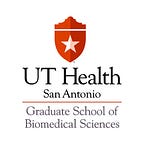Meet The Researcher: Maria Prado Works on Osteoporosis Research
Maria Prado is a second-year Ph.D. student in the University of Texas San Antonio (UTSA) and UT Health San Antonio Joint Graduate Program in Biomedical Engineering. She works in Dr. Hugo Giambini’s Musculoskeletal & Orthopedic Biomechanics Laboratory where she is spending time learning techniques and other tools implemented in ongoing projects from the lab, which she hopes she can implement in her future dissertation project.
Prado grew up in Medellin, Colombia in an environment surrounded by math and physics as both of her parents are high school teachers.
“Being involved in this instructional environment stimulated me to explore different areas of science,” she said.
She obtained her bachelor of science degree in Biomedical Engineering and a Master’s degree in Biomedical Engineering at the Escuela de Ingeniería de Antioquia in Colombia.
During her master’s degree, she had the opportunity to participate in research projects that involved the implementation, analyses, and the creation of 3D models, more specifically medical devices, using medical images, such as computed-tomography (CT) and magnetic resonance imaging (MRI).
Fascinated by everything she learned, she decided to apply to the University of Texas San Antonio (UTSA) and UT Health San Antonio Joint Graduate Program in Biomedical Engineering.
She was drawn to the research carried out in the Musculoskeletal & Orthopedic Biomechanics Laboratory.
“I realized I had a long way to go to fully understand how to manage analyses of medical images and development of finite element models and their applications in biomechanics field,” she said.
At the lab, she is working on several projects. One of which is regarding vertebral fracture prediction.
“The goal of the project is the implementation of quantitative CT (QCT) and computational modeling (FEA) techniques to understand bone structure and failure properties,” she said. “The development and implementation of comprehensive techniques will help us better predict bone fracture.”
She is also working on a related project which includes dual-energy vs. single energy QCT-FEA along with patient-specific modeling of vertebra fracture prediction. The analysis of MRI images of the tibia will be used for fracture prediction.
To be able to work on this project, she has been trained in several different softwares including Mechanical Finder, Metasequoia, Ansys, Shamu — supercomputer -, Mimics.
“Vertebrae is the second most common affected bone by osteoporosis, with an annual fracture incidence of more than 1.4 million cases. Despite the high prevalence in fractures, the current diagnosis techniques have several limitations,” she said. “With our research at the Musculoskeletal & Orthopedic Biomechanics Laboratory, we implement experimental techniques, imaging tools, and computational modeling (QCT/FEA) to understand bone structure and properties.”
One of the long-term goals of her research is to develop fracture prediction methodologies to improve quality of life of patients with osteoporosis or other pathologies affecting the spine.
In the future, Prado hopes to learn the skills and techniques necessary to build a strong career in academia, become an independent investigator and teaching instructor, and be able to translate her work into clinical applications.
“I realized that the research environment in the U.S. is very different than that of my home country,” she said. “This difference made me realize and understand how, by being part of academia, it is possible to have an impact on the scientific community and research development.”
Outside of school, she loves exploring the city of San Antonio.
“As a new resident in San Antonio (I just been here for a year), I still consider myself a tourist. So, I like to be outside exploring the city and local attractions, hiking, working out, and spending time with the friends I have made. I am a food lover, so I like to try new dishes from local restaurants. Also, family is an essential part of my life and in my free time I like to talk and catch up on with them.”
